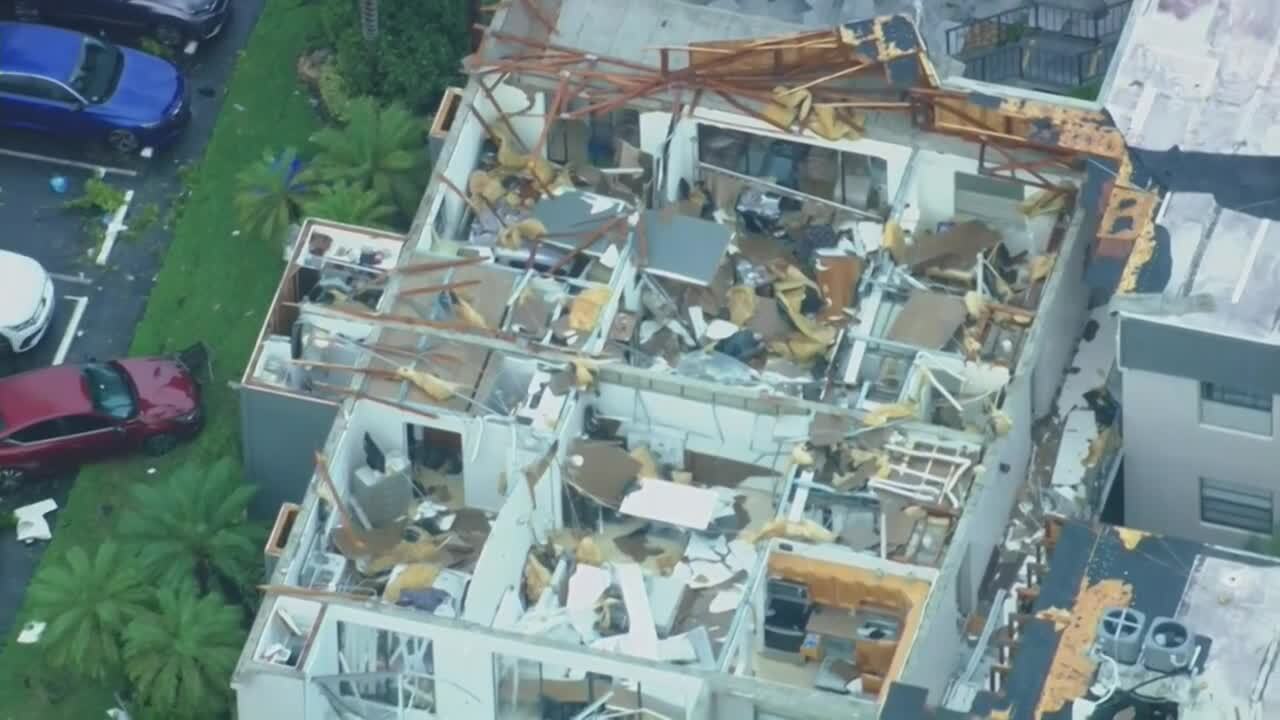WEST PALM BEACH, Fla. — The tornado warning alerts on your phone this week likely gave you the time you needed to take cover from the storm.
But for many of WPTV's viewers, those warnings either came too close to the impact of severe weather or not at all.
We took a look into how these warnings are issued and who is responsible for making sure residents have time to get to a safe room.
There are several steps that are taken to notify each region impacted by a tornado warning. For example, the cellphone towers that are needed to be selected to get the alert sent to your phone.
Glenn Gurvitch spoke to WPTV a day after a tornado ripped through his screen enclosure in Wellington on Tuesday night. He said his alert came five minutes too late.
RELATED: Here's how to help victims of Hurricane Ian

Also, Richard Martin, a Kings Point resident, received a tornado warning shortly before his roof caved in after the storm hit his home.
Timing is everything for the National Weather Service's office in Miami.
Warning coordination meteorologist Robert Molleda said he handles warnings for South Florida including Palm Beach County and Lake Okeechobee. The NWS office in Melbourne handles the Treasure Coast's alerts.

"We have pretty much constant coordination," Molleda said.
Once the signs of rotation in a thunderstorm are seen on radar, he said they zero in on what region is impacted and then issue an alert.
"Those warnings go out. They are received via the communication networks by those cellphone towers," Molleda said. "They can decode the location message in our warnings and then alert the cellphones or the devices that are within the footprint of that transmitter."
"What would be the reason why someone wouldn't receive a tornado warning if they are in that vicinity of where the tornado is headed?" WPTV reporeter Michelle Quesada asked.

"That's hard to say," Molleda said. "There could be a variety of reasons."
Molleda said once the NWS issues the alert through the wireless emergency alert system, those warnings will reach devices.
WPTV asked cellphone carriers about this, but they said our questions would be better answered by FEMA and the Federal Communications Commission, which implements and administers the alert system. WPTV has contacted those offices about the alerts.
"We urge everyone to have more than one way of receiving weather alerts," Molleda said.
To ensure you are getting severe weather alerts, check your phone settings under "Notifications" and make sure that your government emergency alerts are turned on.
"CTIA" which represents the U.S. wireless communications industry told WPTV that weather emergency alerts are not affected by network congestion, and it does not depend on the provider. They said not receiving an alert may also occur because your phone is not connected to a cell site broadcasting the alert or you may be connected to a cell site that is not broadcasting the alert, undergoing maintenance or is out-of service.






